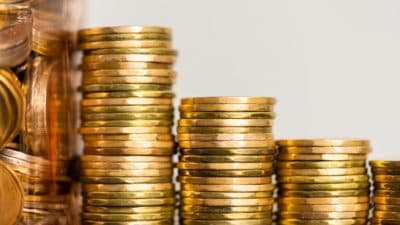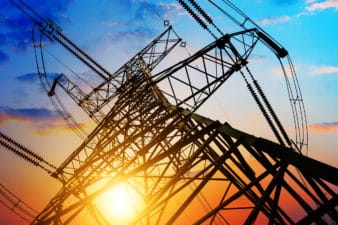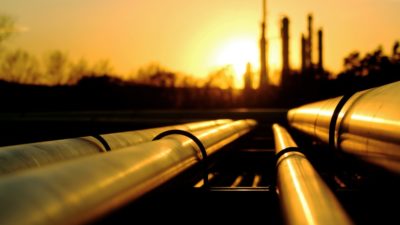Canada is blessed with bountiful resources. It ranks third in the world in recoverable oil reserves thanks to its massive oil sands and top 10 global position in shale oil. It ranks right behind the U.S. — fifth in the world — for shale gas reserves with 573 trillion cubic feet of natural gas.
Just how much gas are we talking about?
Canada’s shale gas is large enough to meet the energy needs equivalent to 573 million households for 15 years. There are only about 35 million people living in Canada so that’s both a problem and a great opportunity. The problem is further compounded by the fact that Canada’s top natural gas customer has abundant shale gas reserves of its own. That said, the opportunity to export its excess gas is an opportunity that could turn out to be very lucrative for the country.
Where is it?
The bulk of Canada’s shale gas riches are located in British Columbia and the Northwest Territories. It’s estimated that 1,237.8 trillion cubic feet of natural gas resides in five shale basins in the region, of which an estimated 335.8 trillion cubic feet can be technically recovered.
Nearly all of the rest of Canada’s shale gas is located in Alberta in shale basins that are associated with oil. However, Canada does have some shale natural gas reserves in the east with technically recoverable reserves in both Quebec and Nova Scotia.
Canada’s largest deposits of shale gas are found in the Liard Basin, the Horn River Basin and in the Cordova Basin. However, about half of the recoverable gas is found in the Liard Basin. Another potentially important natural gas basin is the Duvernay Shale, though its real importance to the industry is the vast amount of recoverable oil and natural gas liquids that it contains. Still, over time the Duvernay Shale could produce as much as a quarter of Canada’s shale gas.
Who controls the gas?
American companies like Apache Corporation (NYSE:APA) and Chevron (NYSE:CVX) have locked up significant acreage positions in Canada’s premier shale gas basins. Apache, for example, has 430,000 net acres in the Liard Basin, giving it control of an estimated 48 trillion cubic feet of natural gas. In addition, the company has an interest in 200,000 net acres in the Horn River Basin.
Meanwhile, Chevron picked up a 50% interest in 644,000 acres of natural gas rights in the Horn River and Liard Basins as part of its acquisition of a 50% stake in the Kitimat liquefied natural gas project from EnCana (TSX:ECA)(NYSE:ECA) and another partner in late 2012.
Despite the abundance of gas and the fact that export terminals are being built, many companies are looking to exit Canadian natural gas positions. For example, as part of the next phase of its major restructuring strategy, Penn West Exploration (TSX:PWT)(NYSE:PWE) is looking to unload its Cordova natural gas assets.
The company is among a number of Canadian energy companies that are simply tired of waiting for natural gas prices to improve. Penn West would rather get what it can from the assets now and reinvest the money to grow its oil production.
The same can be said for EnCana and Talisman Energy (TSX:TLM)(NYSE:TLM). EnCana already sold a piece of its Duvernay Shale holdings as well as its shale gas holdings in British Colombia in the Chevron deal.
Talisman is looking to do the same with a portion of its land position in the Duvernay. That’s in addition to selling a portion to its Montney position for $1.5 billion (though technically the Montney isn’t classified as a shale play). The bottom line though is that companies like Talisman Energy, EnCana and Penn West would rather get the cash now than wait for exports to begin.
Strategic location for export
That said, between the abundant shale gas reserves and additional tight resources like the Montney, British Columbia is preparing to become a world supplier of natural gas. A number of multinational companies are already staking their claim to the region and setting up ambitious multi-billion dollar projects to both drill for gas and then export it to Asia. Overall, the province sees natural gas exports adding a trillion dollars to its gross domestic product over the next three decades.
In just one example, Chevron bought up EnCana’s stake in the Kitmat LNG project, as well as an associated pipeline and natural gas acreage in order to join Apache to bring the project online. The pair already knows a thing or two about natural gas exports as both are partners on the Wheatstone Project in Australia.
One of the reasons Talisman Energy found a buyer for its Montney position is because it sold to a company locking up its supply for exports, the Canadian arm of Malaysia’s Petronas. As a global leader in liquefied natural gas, it sees British Colombia as an ideal spot for its next export facility.
Foolish bottom line
Canada truly has a world-class supply of cheap natural gas. The problem right now is the fact that its supply outstrips demand from Canadians as well as its former top customer, the U.S.
That said, the world is starving for natural gas and Canada’s supply is strategically located in close proximity to future export facilities. That could open up a really profitable opportunity for investors that are willing to wait for the facilities to be built.







